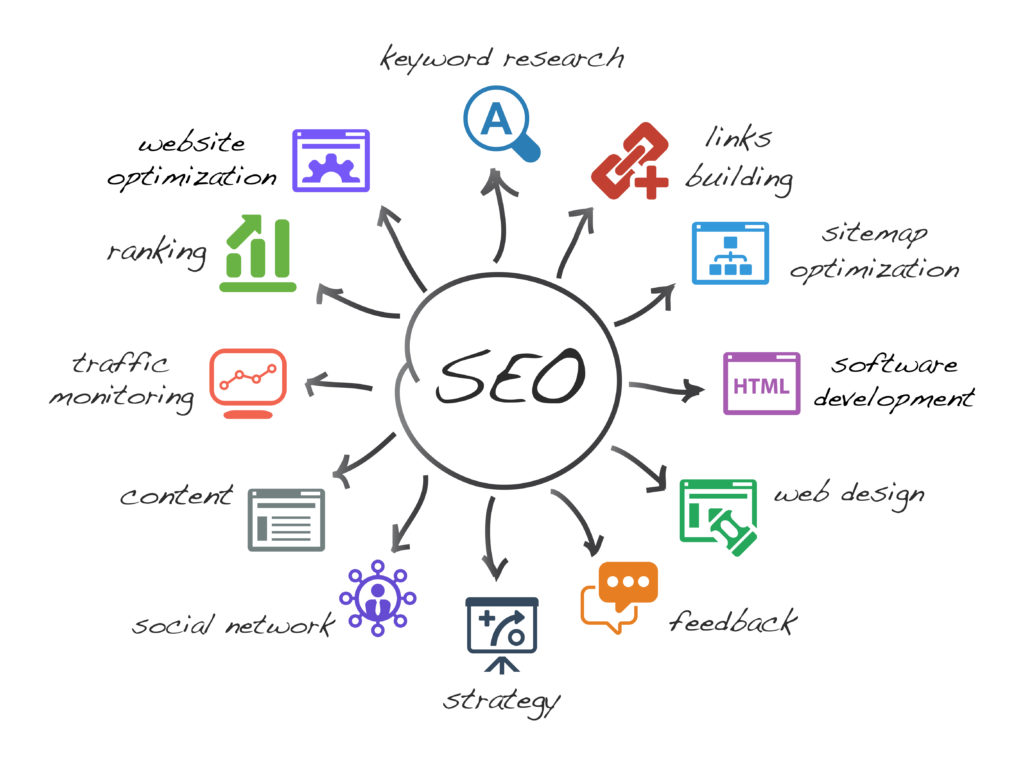We all want our content to appear as one of the first results in a Google search—it’s key to the success of any digital marketing strategy. As a digital copywriter or digital marketing manager, it’s critical that you make it easy for search engines to understand what your content is about so they can deliver it to the people searching for relevant keywords.
Easier said than done—there are a lot of misconceptions out there about SEO writing and optimizing your content to achieve the best search engine results.
There is no one SEO copywriting cheat sheet, but there are certain things you should be doing to improve your search engine results. On the most basic level, SEO writing is really about creating content that your target audience can find with search engines. A guiding principle should be to make your content relevant and valuable to readers so that the readers engage and you can increase your click-through rates and not only gain more views.
Some simple dos and don’ts for a digital copywriter:
DO write with your reader in mind and use natural, conversational language.
DON’T resort to keyword stuffing—that creates bulky text that doesn’t make much sense and won’t help you hit your SEO goals.
What else goes into good SEO writing? We’ve broken it down for you below.
Before you start writing
Good SEO Content writing actually starts before you put the first word on the page and involves thorough research to do the following:
Accurately define your target audience
To write relevant content for your audience you have to first understand who your target audience is. It’s more specific than the general target audience for the entire business—you need to drill down and identify the people you want to be reading each specific page or blog post. Then, you need to understand their needs so you can craft content that speaks to those needs.
Identify your semantic and primary keywords
The next step is to conduct keyword research to understand your search volume, keyword difficulty, density, and distribution in the article. It’s always a good idea to look at content ranked on the first page of Google search results for the same keyword. That will help you understand your competitor’s advantage and differentiate your content—you don’t want your SEO content to be identical to theirs, even when you’re both aiming for first-page rank positions for the same keywords.

On-Page SEO components
Once you’ve done the research, it’s time to set up your page and write your content.
Target keywords
Your primary keyword is critical to increasing organic traffic and must be used several times in every article you write. You should always include your primary keyword in the article title, and again in the first 150 characters of the first paragraph.
It isn’t enough to include your primary keyword in the text of your article, it should also appear in the meta description, meta title, and URL slug—more on that later.
Semantic keywords are different—each semantic or secondary keyword only needs to be included once in every article. If possible, it’s a good idea to also use semantic keywords in the H2 or subheadings.
On-page SEO content
There are rules to SEO, and as a digital copywriter, you want to make sure that you don’t mess up the basics and damage your ranking by making a technical mistake like exceeding character limits. Start by checking that all on-page SEO elements are within limits including:
- H1 or Article Title: < 70 Characters
- Page Title: < 70 Characters
- Meta Description: <150 characters
- Slug < 72 Characters
The next step is to look at the user experience. That includes creating a logical and easy-to-read page layout, and making the content easy to scan by using elements like bullet points.
Headings
Try to organize your article headings in a way that will make sense to the reader, so that a story unfolds throughout the article. Make sure that you clearly mark headings, subheadings, and bullet points into their respective categories (ie. H1, H2, H3). Doing so makes it easier for the reader to understand how topics are related, and scan the content quickly and easily.
Internal links
People often make the mistake of thinking that external links are all that matters, but actually, internal links are also important. Create at least 2-3 in-text links to other relevant pieces of content on your website in every article you write. For example, you could link to articles in the same topic cluster or even articles that are optimized for the same keyword.
Images, videos, and other media
Relevant images, diagrams, and embedded media can add a lot to your articles and blog posts, and if you use them right, they can also improve your search engine results. You should make sure to add an alt-tag for each image that uses the main keyword while describing the image. You should also compress the file size—keep your images as small as possible without distorting the image quality.
Include a call-to-action
A strong article will keep the reader engaged if it’s clear what happens next. Let your reader know what the next step on his or her journey is. If the objective of the article is to inform or educate, you might want to direct the reader to additional content by displaying a list of other relevant articles with featured snippets.
If your objective is to convert the reader to a lead, it’s a good idea to offer a downloadable content asset addressing the reader’s position in the customer journey. It’s both a good way to keep the reader in the funnel and a way to collect his/her contact information. Another CTA option is to offer the reader the option to book a demo or access a free consultation.
Optimize your page URL
You may not always be able to determine the page URL, but if you can, it can have significant SEO benefits and make the article more inviting for readers who see the full URL.
Ideally, your URL should be descriptive of the page topic and as short as possible—avoid long numbers and symbols. It’s better to use all lowercase letters, and use hyphens to separate words rather than spaces.
Quality control
You’ve done your research, written great content, and crossed your T’s and dotted your I’s for all the in-page elements from target keywords to title tags. You’ve even uploaded and published your article, but that doesn’t mean that you’re done with your SEO writing tasks. After publishing you should always do quality control to make sure that you didn’t miss anything and that there are no errors.
For example, you should check that all your links are correct and working (not broken) and that your page is running at optimal speed. Then look at the content as if you were a reader seeing it for the first time. Is it readable? Does the layout make sense? If not, make changes to that you can offer the best user experience possible.
Summing it up
SEO writing can be complex. But if you don’t do it right, your article will end up on the third page of search results while your competitors rise to the top and rake in the traffic. Rather than trying to keep track of it all on your own and taking chances that things will fall between the cracks, or that you simply won’t have enough time to dedicate to it, it can be a good idea to use an SEO specialist, SEO Agency and a dedicated Digital Content Writer. That way you benefit from the extensive experience of someone working exclusively in the SEO domain, and also someone who can focus solely on that aspect of your marketing plan.
Learn more about how an SEO Agency can help your business—book a free consultation now.


